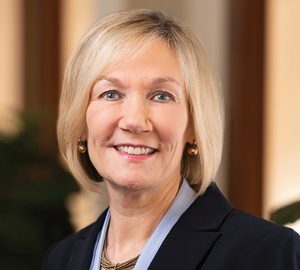Weather in the Midwest is so unpredictable. What Insurance coverage do St. Louisans need to protect themselves against extreme weather and natural disasters?
[fonda hereford]
VP/personal risk management specialist, AHM Insurance Group
The entire Midwest is susceptible to extreme weather conditions, so St. Louisans are well-advised to purchase a broad homeowners policy to best protect their homes and possessions. A leading national insurer reported that in 2013, 25 percent of its claims paid in Missouri were due to wind and hail, versus only 9 percent nationwide.
Coverage against tornado damage is included in most basic homeowners policies, but many insurers are now using separate wind and hail deductibles, typically 1 or 2 percent of the dwelling amount. Earthquake coverage is almost always an add-on that carries an additional premium. Because we’re situated on the New Madrid fault line, it can be costly in the St. Louis area. Independent insurance agencies usually have various options, no matter a home’s age or construction type.
Flood insurance is usually purchased separately through the National Flood Insurance Program. Be aware that ‘flood’ means more than the overflow of a body of water—it also means surface water events. So water from a neighbor’s property flowing across yours after a heavy downpour could be considered a flood, and coverage could be called into question if you don’t have a separate flood policy.
And, especially if you have a finished basement, be sure to ask your agent if your homeowners policy includes ‘back-up of sewers and drains’ coverage. If it doesn’t, add it.
[matt stark]
exclusive agent, Allstate Insurance
In considering risks we all face, most of us ask, ‘What’s the probability an event will occur?’ But a more helpful question when it comes to evaluating your insurance coverage is, ‘What are the consequences for me and my family if a catastrophic event occurs?’ This helps us focus on the types of insurance we need to protect the things we consider most important.
Homeowners coverage varies from carrier to carrier, but most policies cover tornadoes. It’s important to review the underlying limits and inclusions in a policy, because most do not cover floods or earthquakes. So you might need to add protection under your homeowners policy, or through separate policies.
Floods are the No. 1 natural disaster in the U.S., with nearly 25 percent of all flood losses occurring in low-to-moderate risk zones. Have a local agent evaluate your flood risk, even if it’s not required by your lender. You also may want to consider adding water back-up coverage, especially if you live in a low-lying area.
Earthquake coverage, pricing and availability can vary widely depending on the carrier and on the type of home construction. Earthquake deductibles typically range from 5 to 20 percent of the dwelling value, so you’ll want to consider the benefits as well as the cost.








